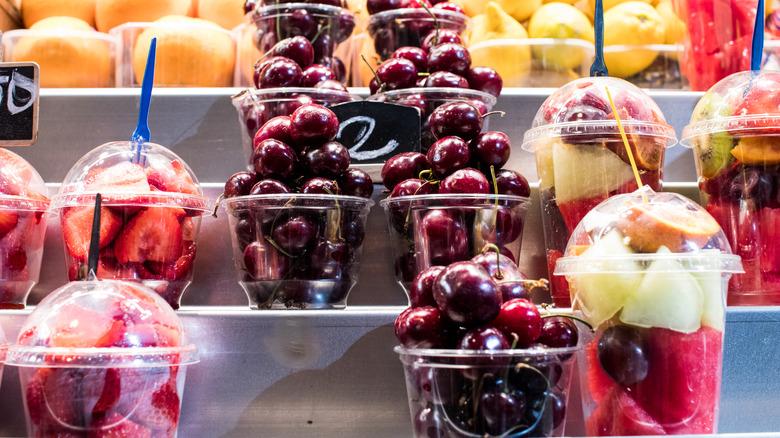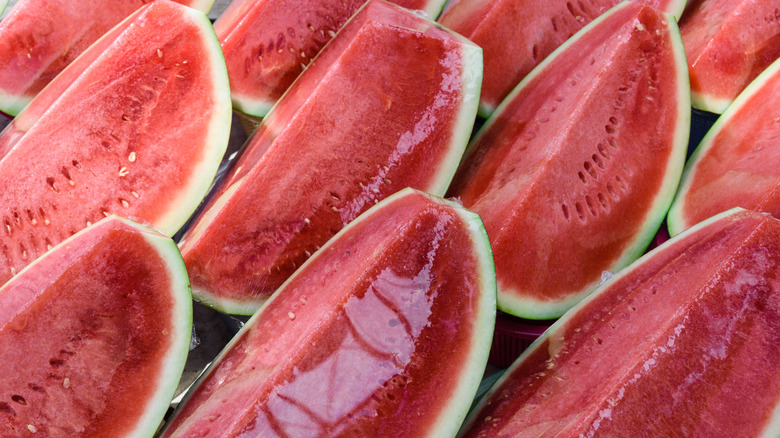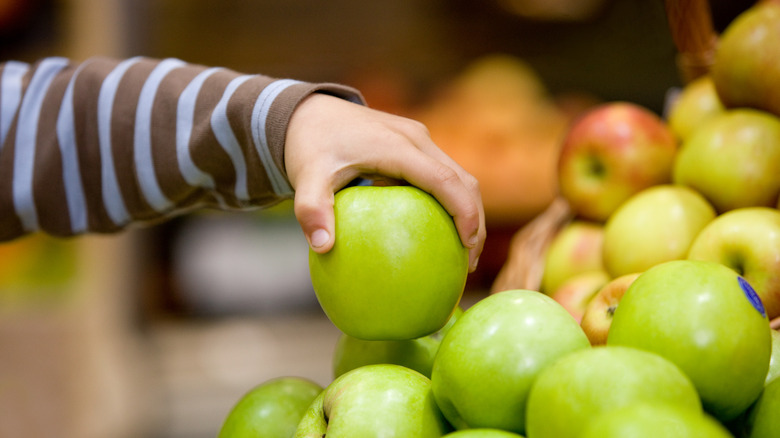The Contamination Risk Behind Pre-Cut Fruit And Veggies
There is no denying the convenience of pre-prepared produce — what time-starved cook can resist an array of plastic-packaged melons, pineapple, carrots, and other fruits and veggies that are peeled and ready for use? However, cut produce comes with its own complicated factors to consider before buying. Did you know that these readymade servings of your daily fruit and veg might come with a side of bacterial contamination?
No food product is immune to illness-causing bacteria, but there's a big reason why pre-cut produce comes with more of a risk than its fresh counterparts. Uncut fruits and vegetables are protected by their rinds and skins, which prevent the flesh inside from being compromised by germs. When the skin is cut or peeled away, that protective layer is thrown in the trash, allowing dangerous bacteria such as E.coli or salmonella to potentially make their way into your produce.
In recent years, there have been several recalls of pre-cut fruits and vegetables following widespread incidents of foodborne illnesses, with prepared cantaloupe proving to be a frequent offender in 2023. The next time you stop by the grocery store, you might want to think twice before picking up cups and containers of fruit salad or mixed vegetables.
The risks of pre-cut produce
Buying fresh fruits and veggies can help you avoid the pitfalls of the pre-cut stuff, but it's not a guaranteed safeguard. Improper handling is an issue with all types of produce, causing contamination via germs on machinery and workers' hands. Mistakes such as using unclean tools or cross-contaminated cutting surfaces can pose a risk when handling any fresh ingredients.
However, the higher the number of employees and tools that touch a batch of produce from growing to selling, the more likely it is to become contaminated. Buying pre-cut versions, which have gone through more physical processing than whole fruits or vegetables, puts your safety at a disadvantage from the start. Combine that with the lack of protection from peels or rinds, and you can see why it's better to just learn how to effectively cut produce at home.
Cutting into fruits and veggies also shortens their shelf life, another downside of pre-prepared products. As a general rule, pre-cut produce should only be kept in the fridge for three to five days. If you do buy some, pay attention to the expiration date on the container and look out for any signs of spoilage, such as mold or a change in smell or texture. If your produce has gone from firm to limp or mushy, you ought to toss it. Additionally, a change in color, such as browning on the surface, could indicate that your produce has gone bad.
Alternatives to pre-cut fruits and veggies
Buying whole, fresh produce instead of pre-cut versions is an easy fix for most cooks to reduce their chances of illness. However, for some of us, fresh produce is too cumbersome to work with. Even hacks for cutting a pineapple or special tools for coring and slicing apples might not be a help to folks with disabilities or no time in their hectic schedules. To avoid resorting to pre-cut produce, canned versions of certain fruits and vegetables offer a convenient, high-quality, safer alternative. Some canned product winds up with a loss of nutritional value, but others retain all their nutrients and flavor.
Frozen fruits and vegetables also make for a great choice, if you want a middle ground between canned and fresh. Frozen produce's main boon is that it has a longer shelf life than the fresh stuff, so you won't feel pressure to prep and eat everything within a few days. Freezing can mean a loss in nutrient content, but some produce like broccoli is actually more nutritious when frozen. Frozen fruit is also less likely to lose nutrients at the same rate as their canned counterparts.
One unfortunate reality is that not all produce can stand up to canning or freezing. For more delicate fruits and veggies, your choice might come down to fresh or pre-cut, and it's important to understand the risks inherent to the latter before making a decision.


